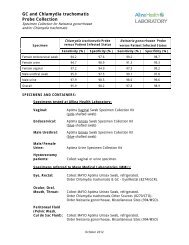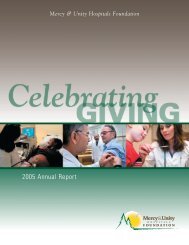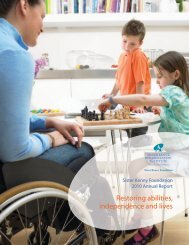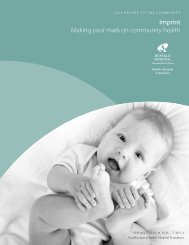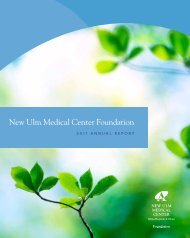Human (Granulocytic) Anaplasmosis (HGA ... - Allina Health
Human (Granulocytic) Anaplasmosis (HGA ... - Allina Health
Human (Granulocytic) Anaplasmosis (HGA ... - Allina Health
You also want an ePaper? Increase the reach of your titles
YUMPU automatically turns print PDFs into web optimized ePapers that Google loves.
TRANSFUSION-TRANSMITTED DISEASE<br />
Cases of transfusion-transmitted <strong>HGA</strong> and babesiosis do occur. Anaplasma can survive for<br />
more than one week in refrigerated blood. Leukoreduction reduces but does not eliminate the<br />
risk of transmission for <strong>HGA</strong>. Babesia organisms may also survive in refrigerated blood, and<br />
the transfusion-transmitted rate of babesiosis, thought to be higher than that of transfusiontransmitted<br />
<strong>HGA</strong>, may be as high as 1 in 1800 red cell units. American Red Cross reports that<br />
50% of recipients receiving Babesia-infected cellular products will demonstrate seroconversion.<br />
There is sharing of blood products nationally, so the packed red cells your patient receives<br />
may theoretically have come from anywhere in the United States. Some of the reasons<br />
why it is so hard to eliminate the risk of an infected blood product include: It is difficult<br />
to identify those donors who are infected before they become symptomatic or if they have<br />
subclinical infection; some donors infected with Babesia may harbor the parasite for months<br />
without overt symptoms; deferring donors during peak tick activity as potentially infected just<br />
because they are from disease-endemic areas would severely limit blood supply with little potential<br />
gain; and PCR testing of donors for <strong>HGA</strong> is cost prohibitive and felt to be of low yield.<br />
Transfusion-transmitted <strong>HGA</strong> and/or Babesiosis should be considered in patients who develop<br />
fever and thrombocytopenia post-transfusion. The incubation period before manifestation of<br />
symptoms in <strong>HGA</strong> appears to be 7-10 days, similar to that of <strong>HGA</strong> disease transmitted by tick<br />
bites. Symptom onset for Babesiosis is 1-9 weeks following the instigating tick bite; symptom<br />
onset for Babesiosis due to an infected blood product is also thought to be 1-9 weeks, although<br />
it may be shorter than for tick bites, presumably because more organisms are being<br />
introduced. Please contact the associated Blood Bank and MDH immediately about any suspected<br />
cases so that investigation can be undertaken.<br />
As always, please be vigilantly mindful of risks versus benefits when prescribing blood products,<br />
and make sure that you obtain informed consent from your patients.<br />
Also, be aware that the American Red Cross (ARC) is currently undertaking a look-back study<br />
to evaluate by IFA and PCR representative blood donations from high, moderate and low endemic<br />
areas. 10,000 total blood donations from Minnesota/Wisconsin/upper Midwest<br />
(considered a moderately endemic area by ARC) are reportedly going to be evaluated this<br />
year. Donors whose products test positive will be notified, and recipient tracing will be undertaken.<br />
If your patient is a recipient of one of these positive blood products, expect notification<br />
through ARC or via the blood bank/pathologist.<br />
9







